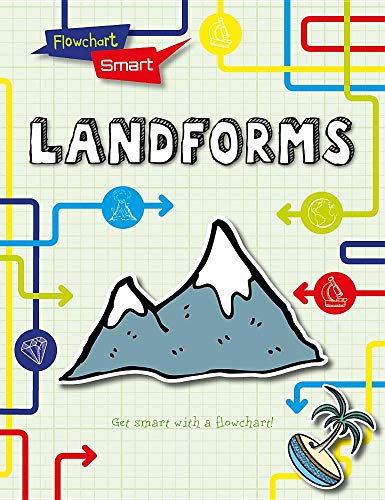-
Landforms
Mary Lindeen
Paperback (Norwood House Pr, July 1, 2017)"Earth landforms can look very different from place to place. They can be hilly, flat, or mountainous. Landforms can change their shape with earthquakes, volcanoes, floods, mudslides or erosion. Some of these changes take a long time, and other changes happen quickly. Includes science and reading activities and a word list"-- K
K
-
Landforms
Mary Lindeen
Library Binding (Norwood House Pr, July 1, 2017)"Earth landforms can look very different from place to place. They can be hilly, flat, or mountainous. Landforms can change their shape with earthquakes, volcanoes, floods, mudslides, or erosion. Some of these changes take a long time, and other changes happen quickly. Includes science and reading activities and a word list"-- K
K
-
Landforms
Emily Sohn, Adam Harter
Hardcover (Norwood House Press, July 15, 2019)Using scientific inquiry, readers will learn about different forces that cause landforms and the layers of the earth. Through everyday connections to science in the real world, see how the Earths surface changes over time. Includes a note to caregivers, a glossary, a discover activity, and career connections, as well as connections to science history. U
U
-
Landforms
John P Rafferty
Library Binding (Rosen Education Service, Aug. 15, 2011)The planets natural dips and elevations, slopes and structures, stud the worlds landscapes and enrich its panoramas. However, the Earths landforms should not be viewed as anomalies in its topography; rather, they are often invaluable components of ecosystems and hold significant clues to the natural forces that fashion our environment. This comprehensive volume examines the various landformsfrom mountains to caves to glaciersthat can be found across the globe. The processes that shape each formation are also detailed within these pages.
-
Landforms
George Finiel and Adams
Hardcover (Goldencraft, Jan. 1, 1972)Common types of natural rock foundations are illustrated and identified for the interested observer
-
Landforms
George F. Adams, Jerome Wyckoff, Enid Kotschnig, Vera R. Webster
Hardcover (Western Publishing Company, Inc., March 15, 1971)earth science
-
Landforms
Richard Spilsbury, Louise Spilsbury
Paperback (Gareth Stevens Pub, Jan. 15, 2019)Can land form where there wasn't any before? What about valleys and canyons? Through accessible language and colorful, fun flowcharts, readers learn the answers to these questions and more in this book. From how the continents arrived where they are today to how volcanoes form islands, the main text is full of incredible, and Earth science curriculum-supporting, knowledge for curious readers to discover. Full-color photographs accompany the text to take readers to the tops of mountains, the ocean coast, and deep into the Grand Canyon. T
T
-
U.S. Landforms
Dana Meachen Rau
Paperback (Childrens Pr, Aug. 16, 1800)None
-
Landforms
Lynn Van Gorp
Library Binding (Compass Point Books, July 1, 2009)Earth’s surface is always changing. Landforms such as mountains, valleys, plains, and plateaus are made by natural forces. These natural forces, whether earthquakes, volcanoes, wind, or rain, wear down and reshape Earth’s landforms over a period of time. Some landforms are only a few hours old, while others are a million years old. Scientists who specialize in landforms are called geomorphologists. For more information, read Pioneers of Earth Scientists: From Mercator to Evans, another book in the Mission: Science series. V
V


